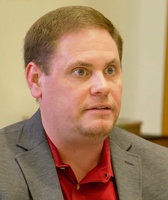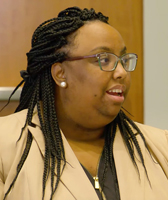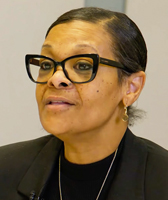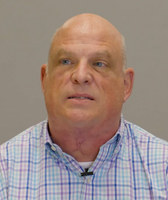Provider magazine sat down with four leaders in diversity, equity, and inclusion (DEI) to discuss leadership skills, DEI successes, areas of improvement, and the future of DEI.
Participants:
-
Mary Adams, vice president of diversity, equity, and inclusion, and vice president of clinical risk management, Genesis
-
Paul Martin, vice president of health and wellness, Trezevant Episcopal Home
-
Samantha Taylor, director of assisted living, Forest Hills of DC
-
Steve Woods, regional director of operations, G ardant Management Solutions
Provider: As scholars in AHCA's new Diversity Equity and Leadership Program (DELP), what was it that interested you about the program? What are you hoping to get out of DELP?
 Steve Woods: In the industry as a whole, there needs to be intentional effort for diversity, equity, and inclusion. This is a great opportunity for me to learn from others in the industry, and then take those ideas back to grow DEI within Gardant.
Steve Woods: In the industry as a whole, there needs to be intentional effort for diversity, equity, and inclusion. This is a great opportunity for me to learn from others in the industry, and then take those ideas back to grow DEI within Gardant.
Mary Adams: AHCA/NCAL has always been the biggest advocate of our industry, and it was natural for me to want to learn from the leaders in the industry and network with individuals who can take me to the next level.
Samantha Taylor: For me, it's an opportunity not only for myself to learn and grow, but also be a part of an opportunity for folks behind us to see what we did.
Paul Martin: We're starting to see the graying of the LGBTQ+ community. How do we prepare residents, but also, how do we create this next generation respects everybody's authentic identity?
Provider: What leadership skills do you think are most important today? What skills do you personally want to build to be better prepared for the changing business climate?
 Taylor: We need to focus on cultural and language inclusivity, which promotes diversity. A lot of times you hear communications come out, and it doesn't hit home for everyone. You want to be able to communicate to a broader audience effectively and inclusively.
Taylor: We need to focus on cultural and language inclusivity, which promotes diversity. A lot of times you hear communications come out, and it doesn't hit home for everyone. You want to be able to communicate to a broader audience effectively and inclusively.
Martin: We need to make sure that everyone feels welcome regardless of their diversity or persona. As leaders, how do we create that culture that allows people—both residents and staff—to be their authentic self?
Adams: It's important as a leader to make sure you're not excluding people while you're trying to include everyone. It's easy for a group of individuals to feel as though they don't belong because they are not in the minority or marginalized groups.
Woods: This is all so important. I'm looking forward to the opportunity to not only train my administrators and management teams, but also our residents.
Provider: Do you think DEI is getting enough attention in the long term care sector?
Woods: I don't think there can be enough attention put on DEI. The more information that can be passed on and the more the light we can shine on DEI is going to make everybody in our profession flourish.
Taylor: It's necessary now for what is being discussed to be put into action. People have gained DEI knowledge and DEI positions are being created, but how do we see it every day in our organizations and community? Applied action is needed more than just the conversations.
Provider: Where are we doing DEI well as a sector? Where can we improve?
 Martin: One of the biggest things is to make sure that we are looking for opportunities to bring those knowledgeable in DEI into leadership positions. Staff are becoming more diverse, and staff are also becoming demanding of equality. As leaders, we are tasked with bringing DEI to fruition through action and dialogue.
Martin: One of the biggest things is to make sure that we are looking for opportunities to bring those knowledgeable in DEI into leadership positions. Staff are becoming more diverse, and staff are also becoming demanding of equality. As leaders, we are tasked with bringing DEI to fruition through action and dialogue.
Adams: Just having DEI discussions is a sign of success. A few years ago, you would not hear people talking in the workplace about DEI like we do now. Residents have expectations of communities meeting their needs from a cultural perspective. It's not enough to have a DEI program, you must have the action behind it, you need the buy-in, and you have to be continuous in that process.
As long as the messaging is clear, as long as we're taking action, as long as we are involving our residents and families, and as long as leaders are being transparent and intentional, we will see significant change over the next few years. Not just talk the talk, but walk the walk.
Taylor: It's important that we continue to educate about cultural competencies. How do you—resident or staff—identify yourself? Tell me more. It grows into a more open conversation and that open-mindedness will help center the care around the person.
Provider: How can leaders make the biggest impact on DEI?
Woods: Leaders must respect everyone that is in our building: families, residents, community partners, staff, other leaders.
Martin: Leaders need to set the example and be the change that we want to see in our industry. But we can't do it sitting in ivory towers or in silos, we have to involve our staff and make them a part of the change.
Provider: Where do you see the LTC care industry, the role of leadership, and DEI in 5 to 10 years?
 Taylor: I hope we see culture change, respect, and open-mindedness.
Taylor: I hope we see culture change, respect, and open-mindedness.
Woods: I would love to not need a program. When you walk into the room and the diversity and inclusion is automatically there, that will be a success. Right now it needs to be intentional, but hopefully we'll get to that point.
Adams: I would love to see more people as change agents. Individuals might feel that DEI doesn't impact them, but as we move forward, hopefully people will become change agents to see changes in our communities and workplaces.
Martin: One thing I would like to see is more groups to bring people together so that we can mentor, lead, and encourage those in the DEI journey.